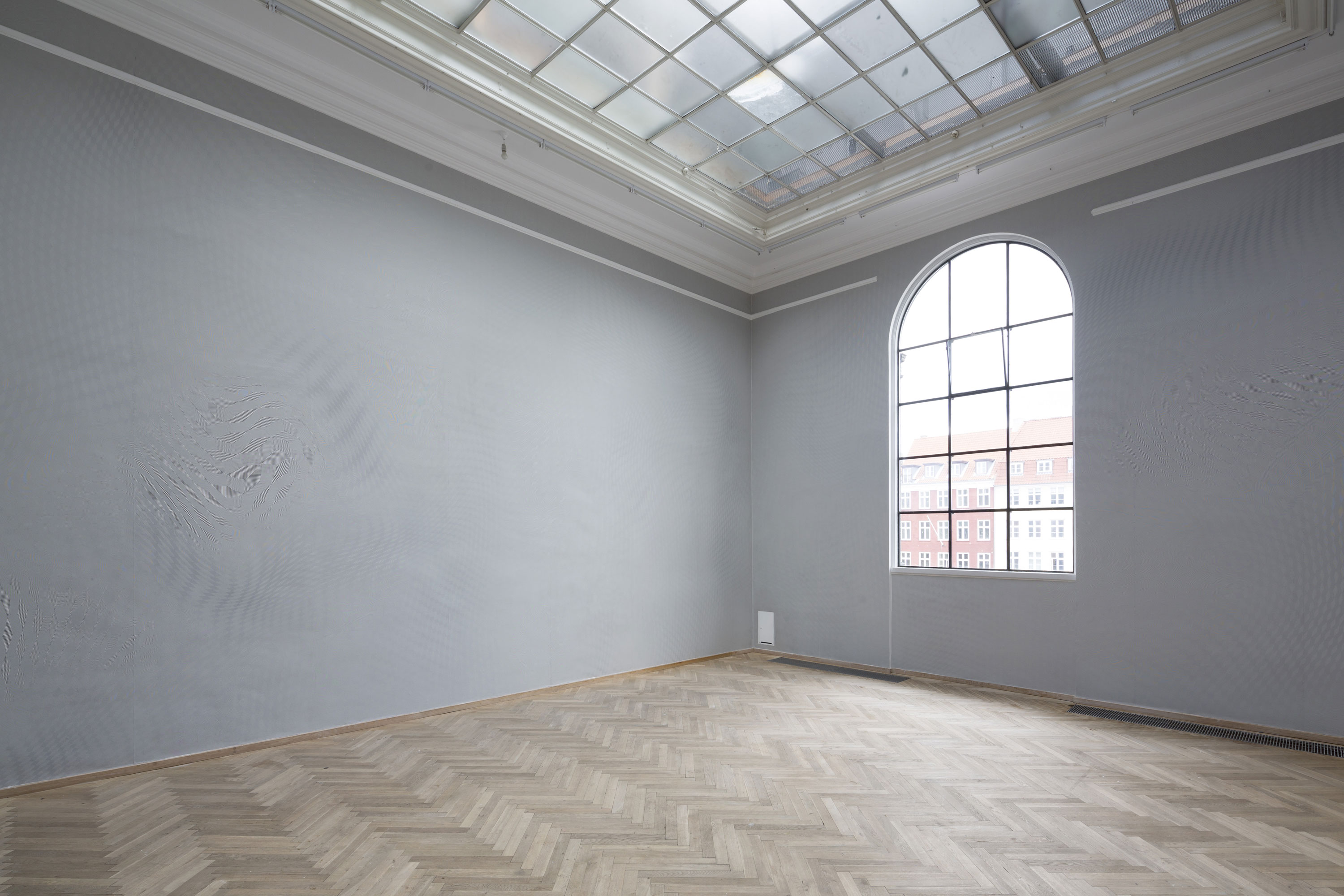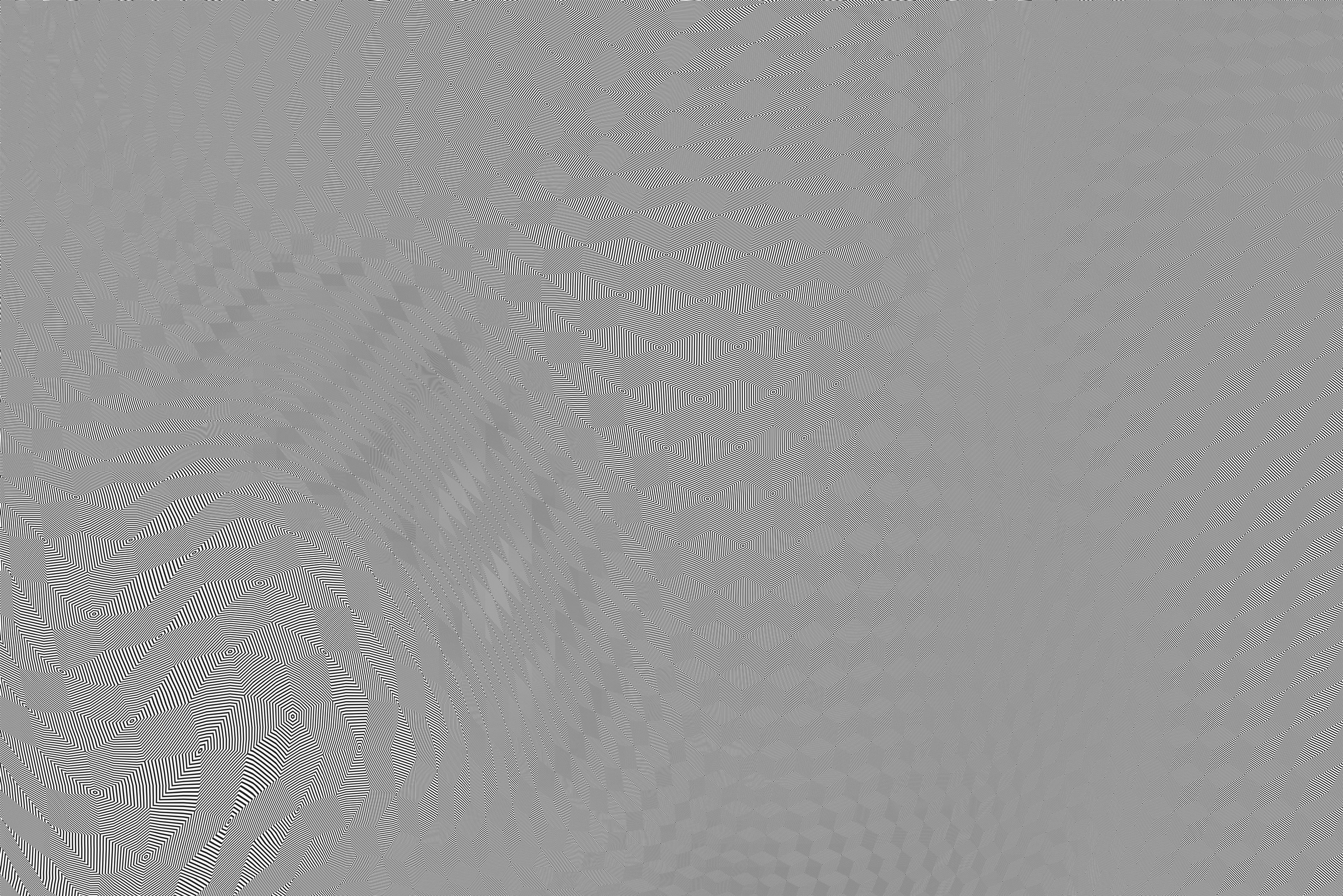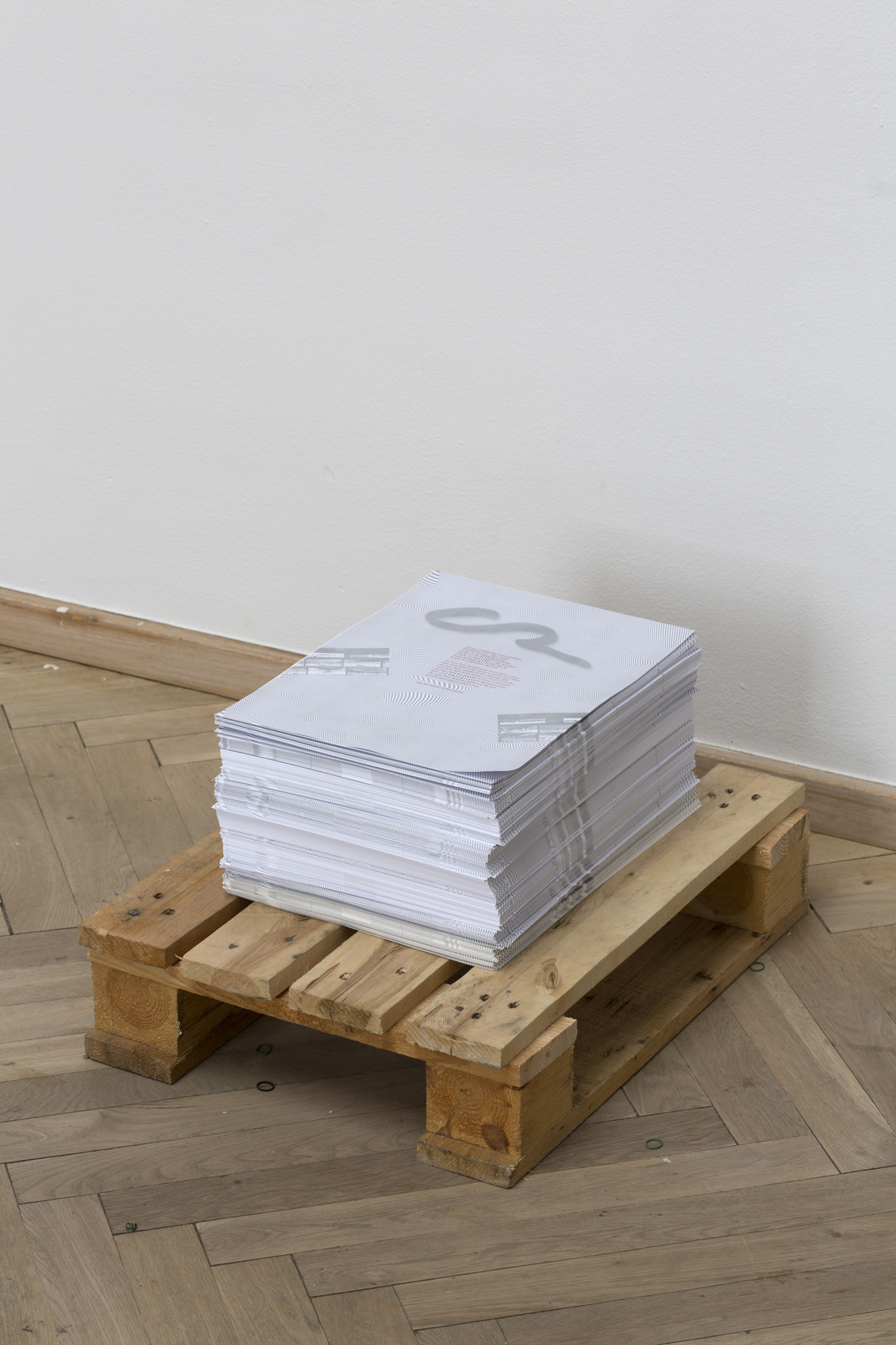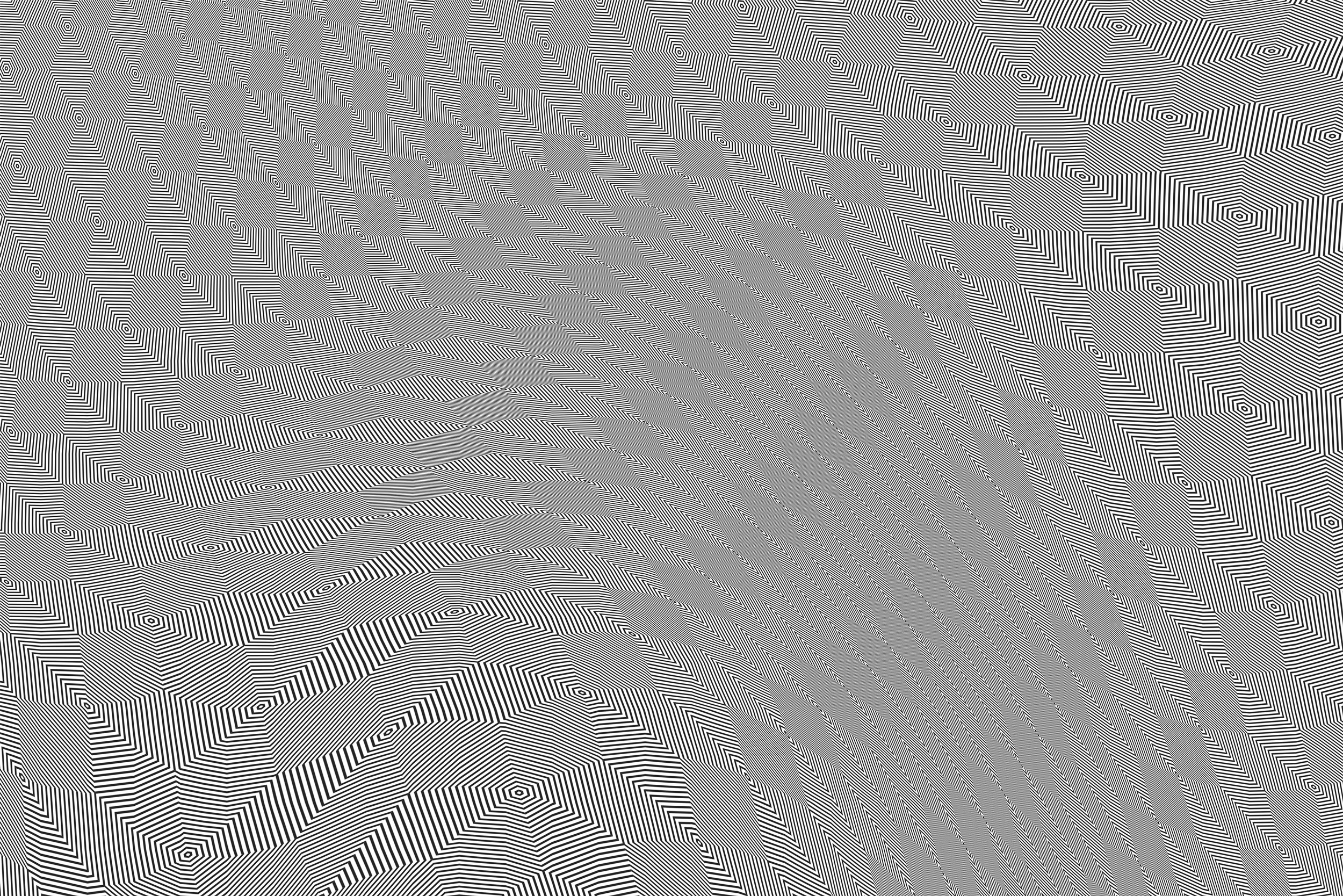



Kunsthal Charlottenborg
2015
Måske er man om tusind år noget kraftigere og mere uforstyrret, AFGANG15
Måske er man om tusinde år noget kraftigere og mere ufforstyrret/ Perhaps one is, a thousand years from now, somewhat heavier and more undisturbed (Rainer Maria Rilke); 2015; Uv – print on non-woven wallpaper, Risso print 1200 stk (Poem by Anna Ørberg); Variable dimensions; Anders Sune Berg